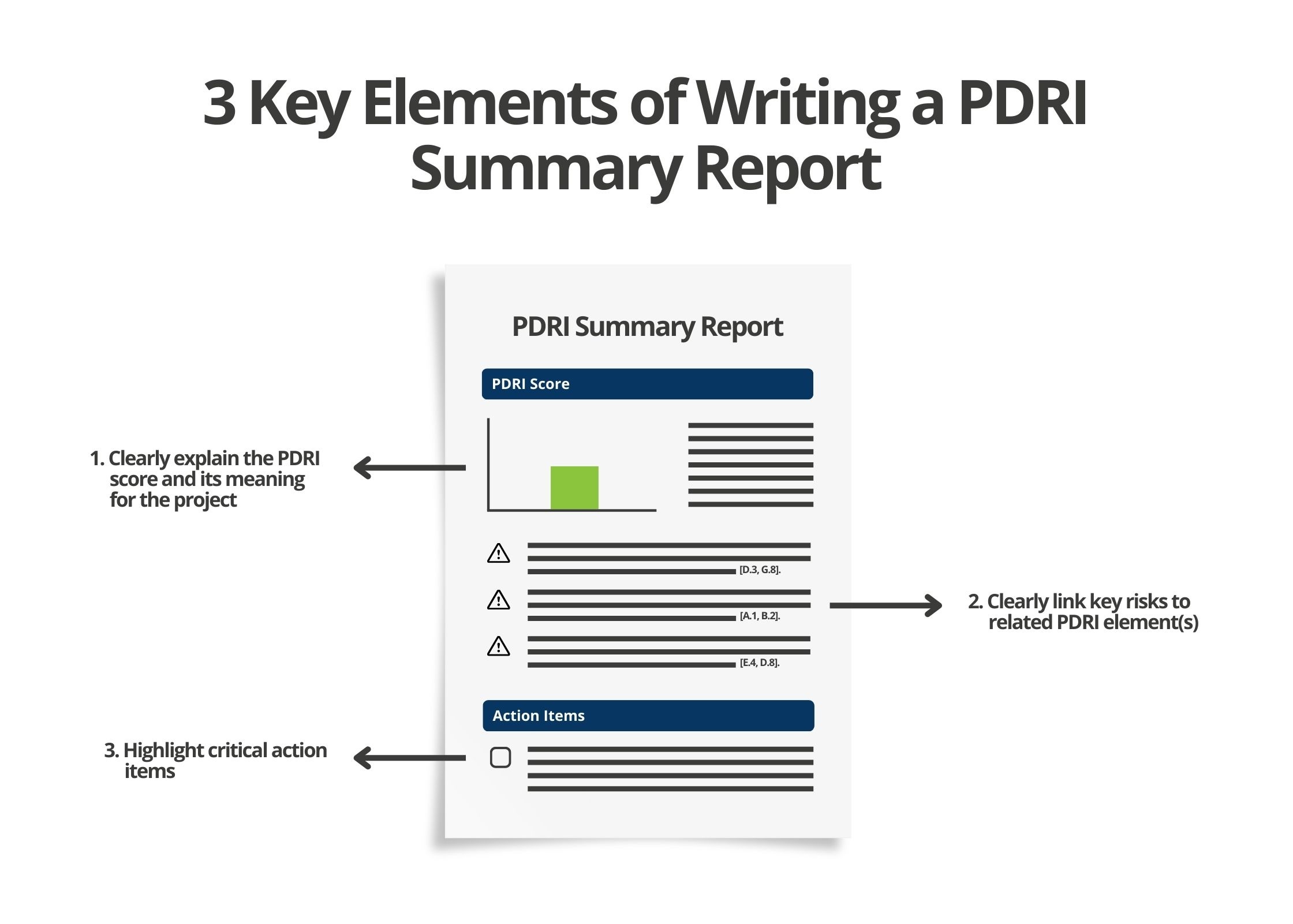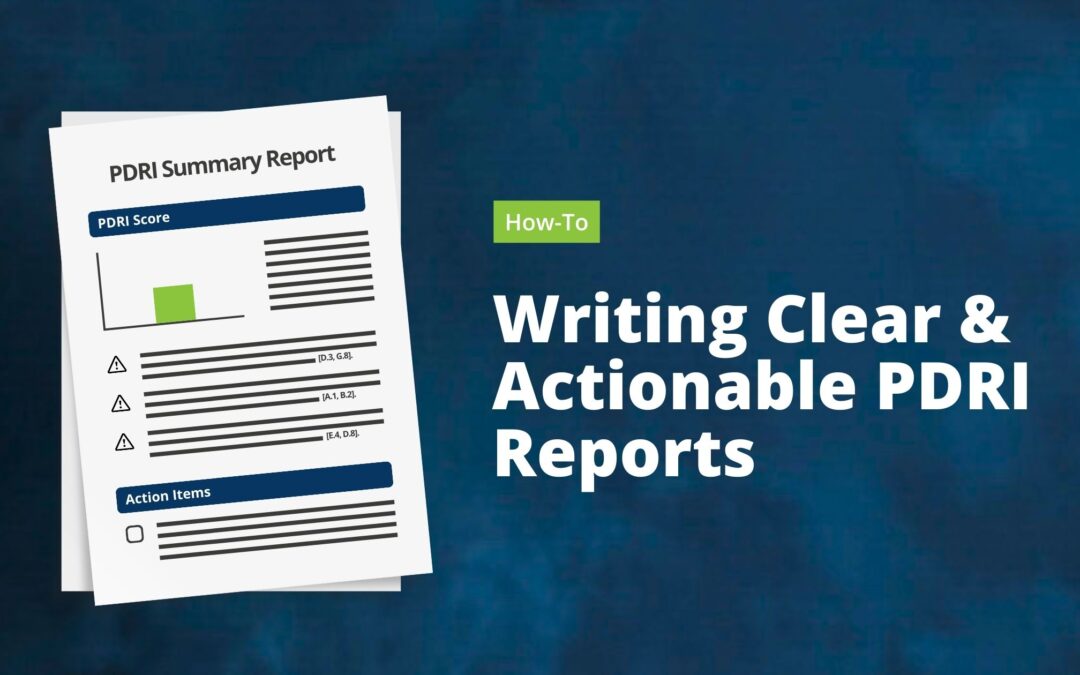Effective communication is critical to managing any project, especially complex capital projects with multiple stakeholder groups. When communication is clear, concise, and well-structured, teams can align their goals, reduce misunderstanding, and make informed decisions. In contrast, poor communication can lead to project delays, budget overruns, and even failed initiatives. Paul Barshop emphasizes this in his book: Capital Projects: What Every Executive Needs to Know to Avoid Costly Mistakes and Make Major Investments Pay Off, explaining that “so much of the success of a capital project lies in the communication across organizational units”1.
Project assurance assessments such as the Project Definition Rating Index (PDRI) provide a structured framework to communicate project strengths, risks, and action items across all stakeholder groups.
During a PDRI Assessment, a neutral facilitator guides the project team through a standardized list of questions (“elements”) to evaluate how well-defined the project scope is.2 These results are summarized in a PDRI summary report, which becomes a key communication tool for engaging project stakeholders.

To maximize the value of these reports, facilitators should focus on three critical communication strategies:
1. Clearly explain the PDRI score and its meaning for the project. The PDRI score reflects the project’s level of scope definition, with lower scores indicating higher definition. The Construction Industry Institute (CII) recommends that projects proceeding to detailed design achieve a PDRI score of less than 200 for optimal cost and schedule performance.3 Because this scoring system may not be intuitive to all stakeholders, facilitators shouldensure the report explains how to interpret the score and its implications for the project.
In your Executive Summary, it is recommended to address the following key topics:
1. Scoring Methodology for PDRI Assessments: Provide an explanation of how PDRI assessments are scored, including details about the scoring scale and what constitutes a “good” score.
2. CII-Recommended PDRI Score Range: Outline CII’s recommended score range for a project at its current stage of development.
3. Alignment Between PDRI Scores and CII Recommendations: Discuss how the obtained PDRI score aligns with the CII-recommended range, highlighting any significant deviations or consistencies and their implications for the project’s readiness.
Without this clarity, the report’s insights risk being misunderstood.
2. Clearly link key risks to related PDRI element(s). The PDRI summary report helps communicate projects risks. By connecting each risk to its corresponding PDRI element(s), the report provides transparency on the risks identified and ensures readers can easily access related comments and action items.
For example, outline a project risk in the following manner: “A key risk for the project is the completion of the overall site plot plan, which could impact the associated FEED deliverables [D.3, G.8].
This approach allows stakeholders to dive deeper into the related element comments related to risks.
3. Highlight critical action items. PDRI Assessments often generate extensive action lists to address gaps in scope definition. To guide decision-making, facilitators should highlight the critical actions that will most significantly improve scope definition.
Consider using this structure to introduce critical action items: “Given the size and complexity of the Project, it is strongly recommended that the following critical action items are added to the work plan with specific completion dates to ensure timely resolution…”
Clear communication of these priorities ensures that teams focus their efforts on actions with the greatest potential impact.
The same communication strategies used in PDRI summary reports can also enhance other project assurance assessments, such as the Construction Readiness Assessment and the Commissioning & Operational Readiness Assessment. By presenting findings clearly and linking them to actionable recommendations, facilitators can support alignment and progress throughout the project lifecycle.
A well-crafted PDRI summary report is more than just a document—it’s a strategic communication tool. By following these three tips, facilitators can ensure that project teams and executive stakeholders have the clarity and direction needed to drive successful outcomes. With effective communication at the core, even the most complex projects can achieve alignment, mitigate risks, and deliver value.
References
1 Barshop, Paul H. Capital Projects: What Every Executive Needs to Know to Avoid Costly Mistakes, and Make Major Investments Pay Off. John Wiley & Sons, Inc, 2016.
2 All PDRI elements are derived from research conducted by the Construction Industry Institute (CII).
3 “Development of the Project Definition Rating Index (PDRI) for Infrastructure Projects,” Research Report 268-11, Construction Industry Institute, 2011

